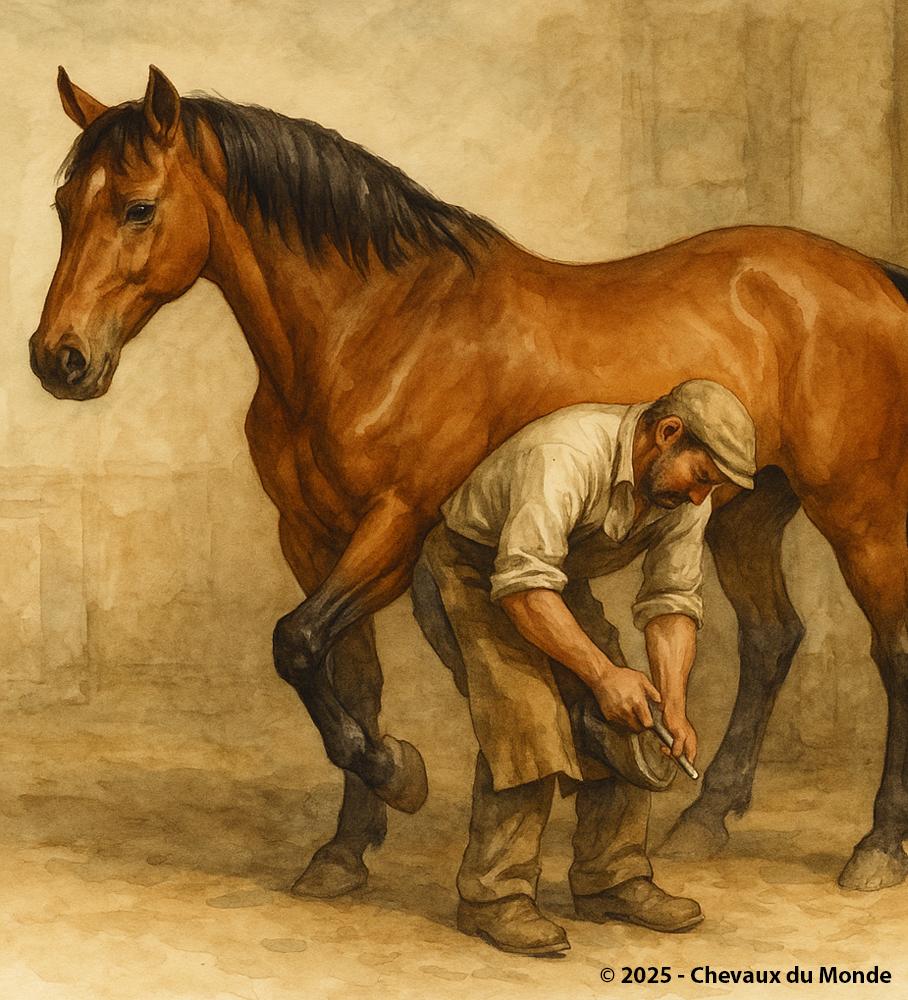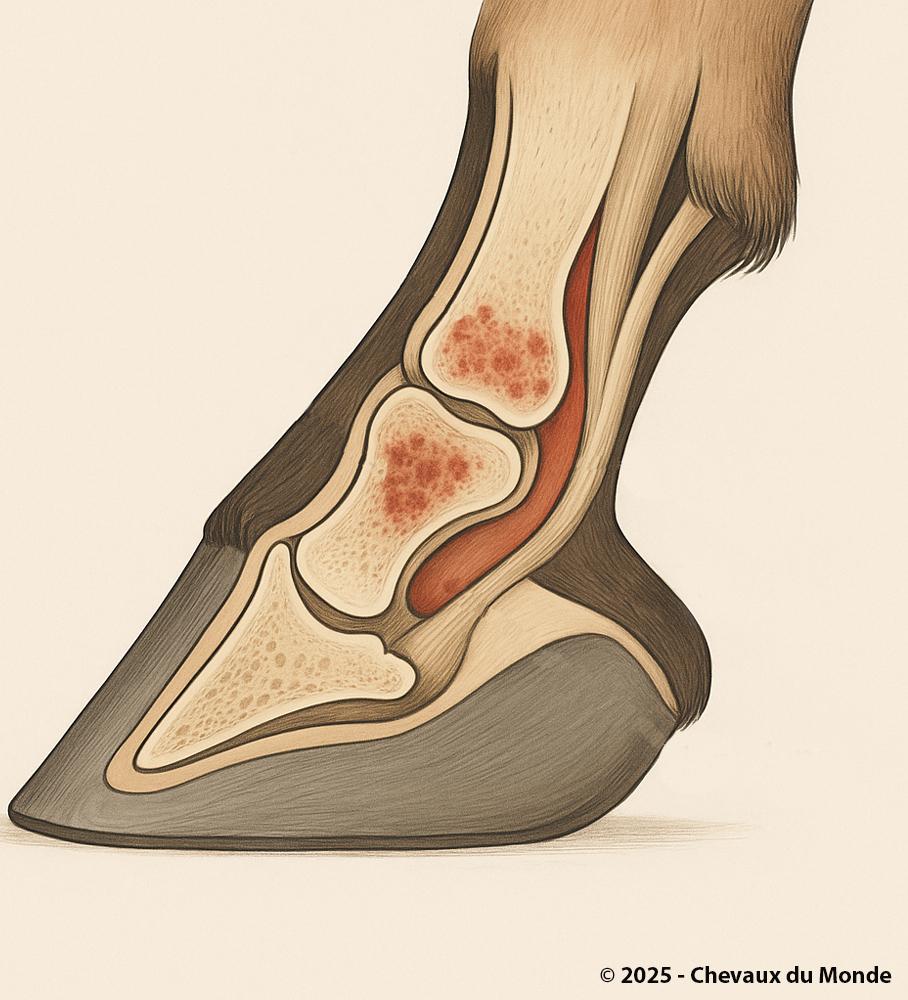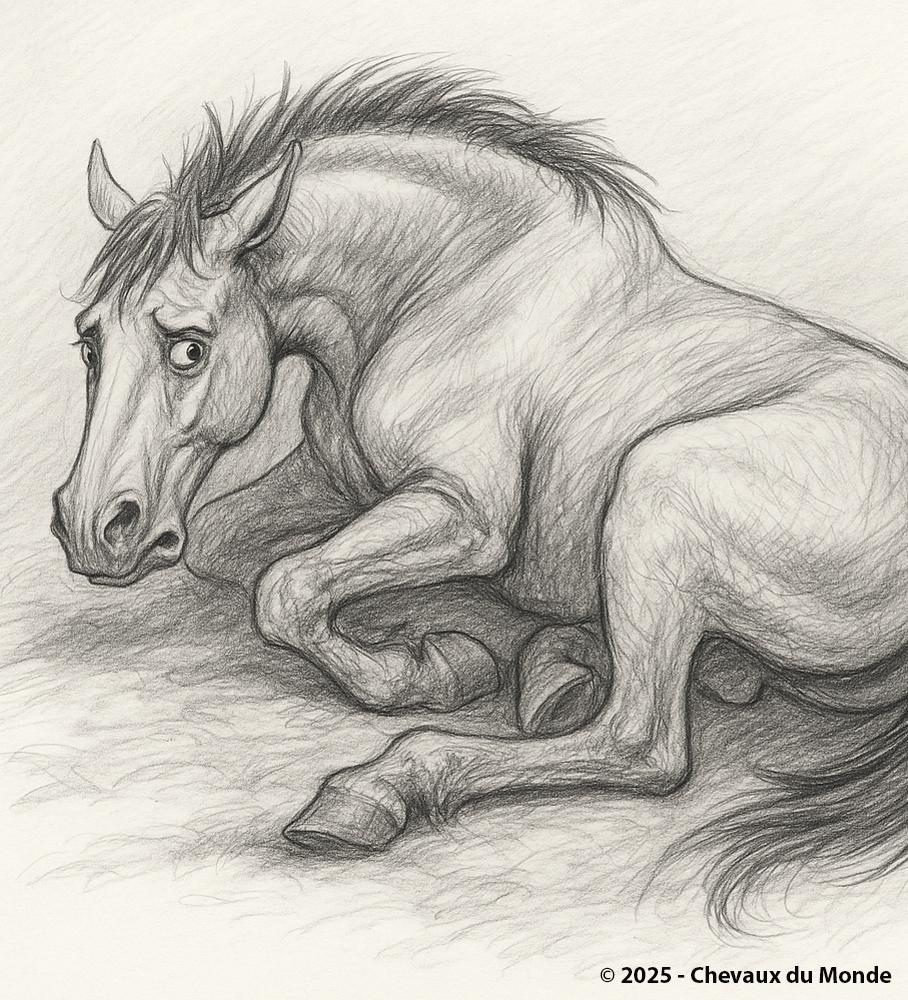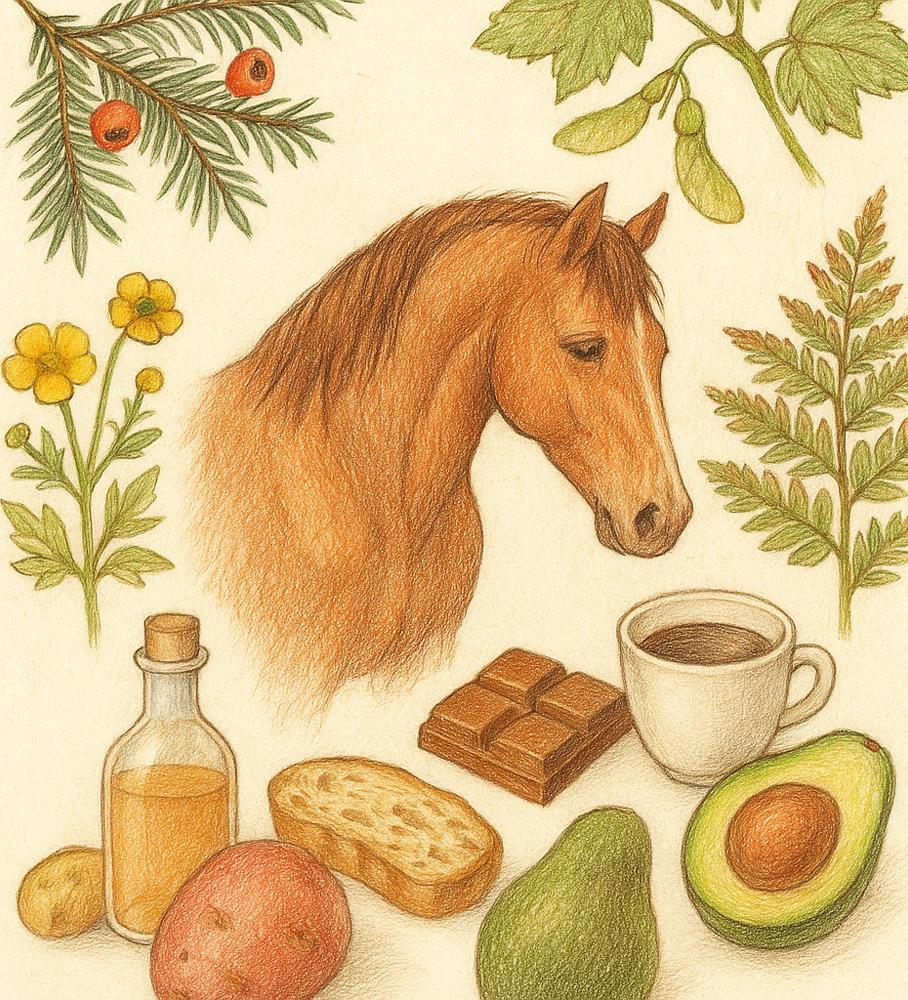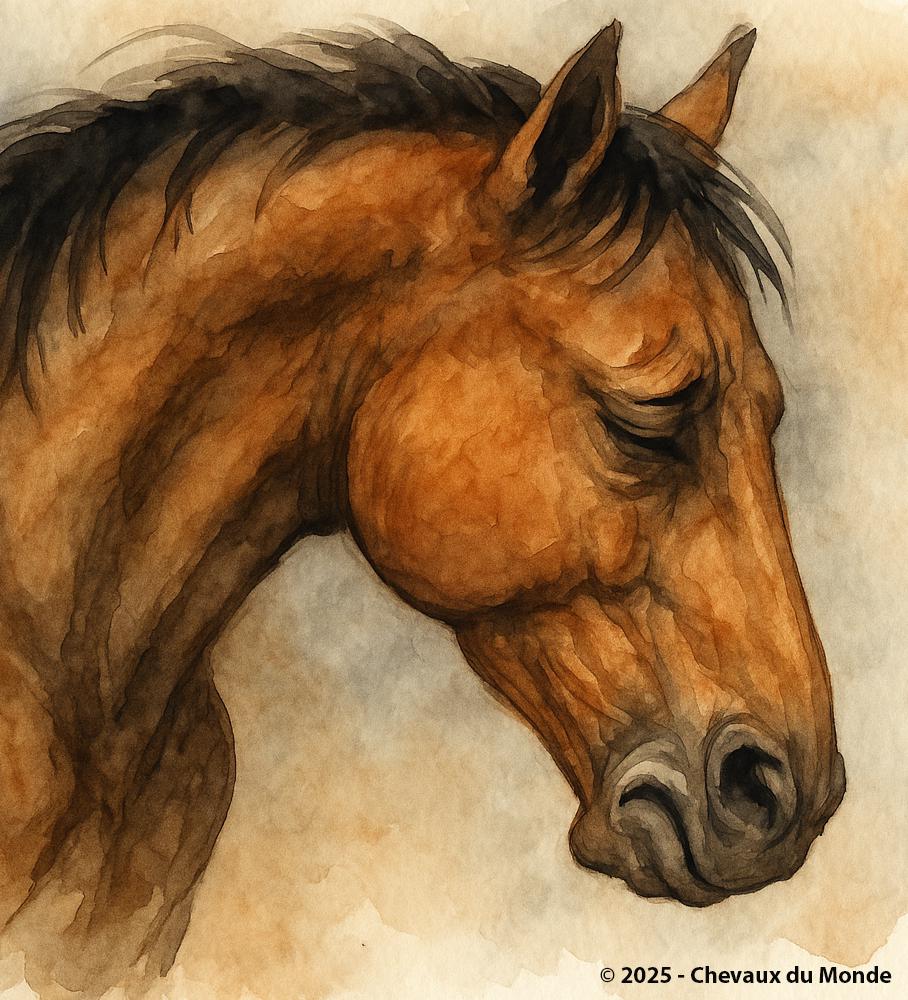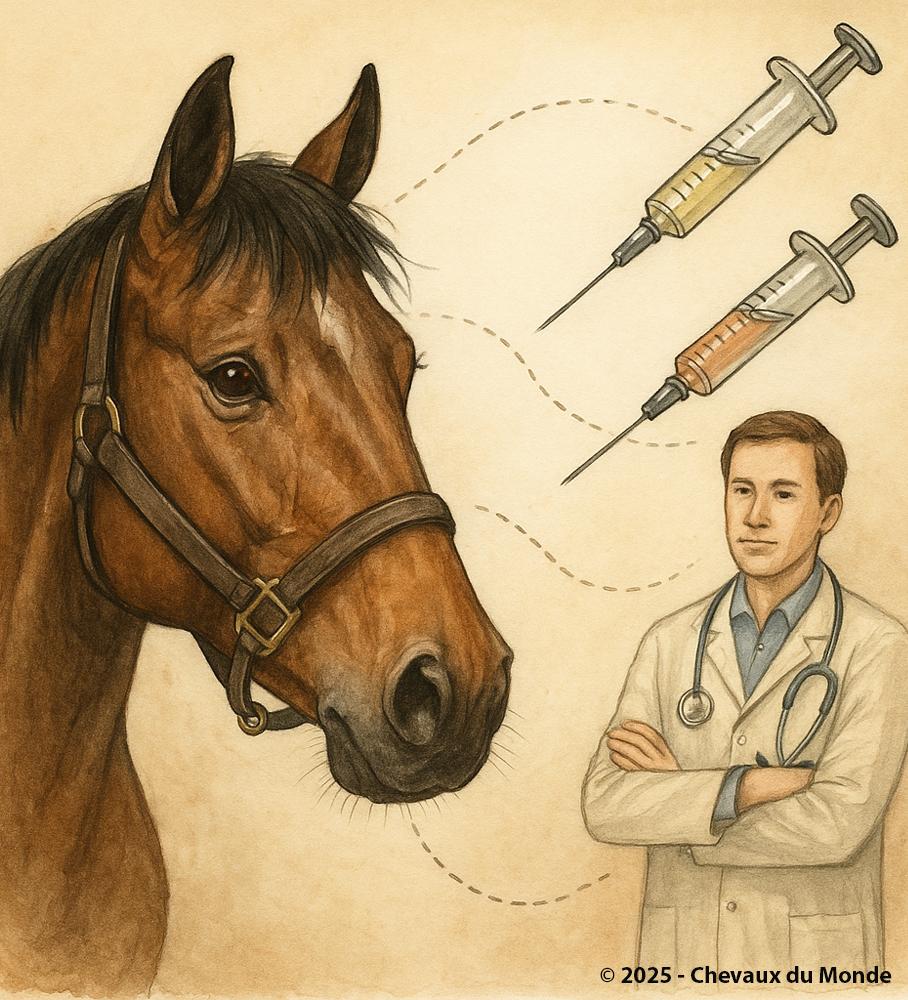LAMINITIS: UNDERSTANDING AND PREVENTING THIS EQUINE SCOURGE

Warning posture: laminitis is a common and painful equine emergency that can become irreversible without prompt care.
Laminitis is one of the most feared conditions in horses. Severe pain, risk of irreversible damage, and sometimes fatal outcome: this disease deserves particular attention. Understanding its mechanisms, causes, and prevention methods is essential for any owner or rider concerned about their horse’s well-being.
Understanding Laminitis
What is Laminitis?
Laminitis is an inflammation of the lamellae connecting the hoof wall to the coffin bone (third phalanx). This inflammation weakens the anchorage of the bone within the hoof capsule and can lead to rotation or sinking of the coffin bone, causing extreme pain.
A Veterinary Emergency
Laminitis is always considered a medical emergency. Prompt diagnosis and treatment can prevent irreversible damage.
Causes of Laminitis
Dietary Factors
- Excess starch or sugars (grains, rich spring grass): causes excessive fermentation in the intestine, releasing toxins into the bloodstream.
- Sudden access to lush pasture: especially in spring or after rain that stimulates grass growth.
Mechanical Factors
- Excess weight: overweight or obese horses are more prone to laminitis.
- Excessive work on hard ground: may cause "mechanical laminitis" due to repeated microtrauma.
Endocrine and Metabolic Factors
- Equine Metabolic Syndrome (EMS): insulin resistance increases the risk of the disease.
- Cushing’s disease (PPID): common in older horses, greatly increases the likelihood of laminitis.
Other Triggers
- Severe infections (retained placenta in mares, severe colic).
- Shock or trauma (e.g., after prolonged immobilization).
Recognizing the Signs of Laminitis
Early Symptoms
- Horse reluctant to move.
- Characteristic "saw-horse" stance: front legs stretched forward and hind legs under the body to relieve pain.
- Abnormally warm hooves.
- Strong, bounding digital pulse.
Advanced Signs
- Severe lameness, sometimes in all four feet.
- Loss of appetite and general depression.
- Long-term hoof deformation (irregular growth rings, collapsed heels).
Preventing Laminitis
Feeding Management
- Limit access to rich grass (use a grazing muzzle, turn out during low-sugar hours, avoid lush spring pastures).
- Split meals to reduce massive starch intake.
- Provide low-sugar hay for sensitive horses.
Monitoring Body Condition
- Maintain an optimal weight (avoid obesity, regularly check body condition score).
- Adjust the diet to actual needs according to work and season.
Exercise and Lifestyle
- Encourage regular exercise (outside of a crisis) to improve circulation and insulin regulation.
- Avoid intense work on hard surfaces.
Monitoring At-Risk Horses
- Regular testing for horses with EMS or Cushing’s disease.
- Anticipate seasonal risks (spring, autumn).
Treatment and Care
In Case of Crisis
- Call the veterinarian immediately.
- Place the horse at rest in a stall with deep, comfortable bedding.
- Avoid unnecessary movement.
- Apply cold therapy to the hooves to reduce inflammation.
Veterinary and Farrier Follow-Up
- Prescription of anti-inflammatories and pain relief.
- Corrective trimming or therapeutic shoeing to stabilize the coffin bone.
- Radiographic monitoring to assess progression.
Conclusion
Laminitis is a major equine scourge, combining pain and the risk of permanent damage. However, careful management of diet, weight, and risk factors can significantly reduce its incidence. Vigilance and prevention remain the best tools to protect horses from this disease.

